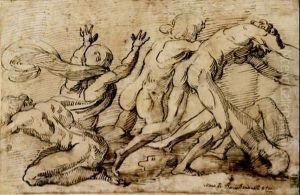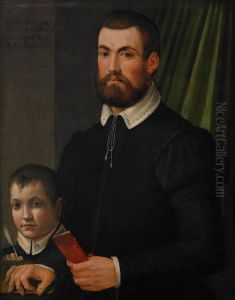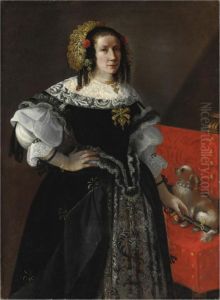Pierino da Vinci Paintings
Pierino da Vinci, born in 1530 in Vinci, Tuscany, was an Italian sculptor, medallist, and draughtsman, renowned for his remarkable talent in the arts at a young age. He was the nephew of the illustrious Leonardo da Vinci, which significantly influenced his early exposure to the arts. Despite his short life, Pierino exhibited an extraordinary mastery of sculpture and drawing, contributing significantly to the Renaissance art movement. His work is often compared with that of other masters of his time, showing a unique blend of naturalism and expressive detail that was ahead of his contemporaries.
Pierino's education and artistic training began under the guidance of his father, Francesco da Vinci, and was later significantly shaped by his studies with prominent artists of the time. He was particularly influenced by the works of Michelangelo, which is evident in his sculptures that display a keen attention to anatomical precision and emotional intensity. Pierino's talent was recognized early on, and he received commissions from notable patrons, including members of the Medici family, which played a crucial role in his development as an artist.
Despite his early death at the age of 23 in 1553, Pierino da Vinci left behind a legacy that has been celebrated for its contribution to the Renaissance movement. His works, including sculptures, drawings, and medals, are characterized by their vibrancy, detailed execution, and innovative approach to traditional subjects. Pierino's ability to imbue his figures with a sense of life and emotional depth set him apart from his peers and established him as a significant figure in the history of Italian Renaissance art. His premature death was a great loss to the art world, as it curtailed the full potential of his promising career. Today, Pierino da Vinci's works are held in high regard, showcasing the brilliance of a young artist whose vision and skill left an indelible mark on the art of his time.
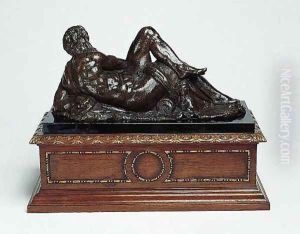
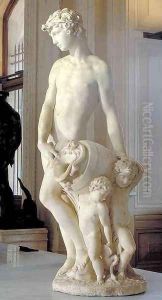
![Young River God [detail: 1]](https://www.niceartgallery.com/imgs/304612/s/pierino-da-vinci-young-river-god-detail-1-5bd4ed1e.jpg)
